- Home
- Clive Cussler
The Rising Sea Page 5
The Rising Sea Read online
Page 5
With this directive, a brainstorming session began that would have made any group of thriller authors proud. One after another, various methods of drowning the planet poured forth.
“What about increased volcanic activity?” Kurt suggested. “Water vapor is known to be a large component of any eruption.”
“Checked on that while you were in Greenland,” Paul said. “On a worldwide basis, volcanic activity is down thirty percent over the last twelve months.”
“What about increased rainfall?” Joe suggested. “We’ve had floods in the south and out west this year. And if it keeps raining here, the Potomac is going to overflow in the next few days. What if we’re dealing with a similar situation worldwide, a forty days and forty nights kind of thing?”
Kurt glanced over at Joe to see if he was serious.
“What?” Joe said. “You’re the one that mentioned gopher wood.”
“I did,” Kurt said. “But forty days of rain would not drown the world.”
“Depends how hard it rains,” Joe said with a grin.
“It’s not happening worldwide,” Gamay said, taking him seriously. “Right now, India is facing a drought and Europe is dealing with a hot, dry summer. Besides, forty days of rain can only be powered by forty days of evaporation. It’s a closed system.”
Kurt intervened. “Brother Joe knows that, he’s just grasping at straws. Let’s move on.”
“What if the measurements are wrong?” Gamay suggested. “It’s notoriously difficult to measure actual sea levels when accounting for tides, waves and wind. Even landmasses exert a gravitational pull on the surface of the sea.”
“Been checked, double-checked and triple-checked using different methodologies,” Kurt said. “It’s not a data error. This is happening.”
“What if the water is coming from space?” Joe suggested.
Stern glances came his way.
“I’m being serious this time. Comets are made up of dirty ice. Many scientists believe that all the water on Earth actually came from comets to begin with. It was deposited here as they bombarded the planet during the first two billion years of its formation.”
Kurt considered this a legitimate theory, but . . . “Haven’t seen any in the sky recently.”
“They don’t have to be large and visible like Halley’s Comet. They could be small enough to not be seen. Or they could be pieces of larger comets that came apart. I was just reading about a comet called ISON that broke up and vanished. Instead of a flare in the sky with a long tail, all NASA found were millions of tiny flakes. If our planet was slowly passing through a field of deconstructed comets, we wouldn’t notice anything, but the falling ice would be caught in Earth’s gravity and dragged into the sea. If there were enough of them, it would add up rather quickly.”
“I suppose it’s possible,” Kurt said. “But I think NASA might have noticed if we were passing through swarms of micro comets. And the sheer number of comets required to raise the sea level this quickly makes it unlikely.”
Joe shrugged. “That’s all I’ve got. Someone else take a shot.”
No one did and Kurt stood up. After three hours of brainstorming, they had little to show for the effort except bleary eyes and exasperation.
“Adjourning?” Gamay asked.
“Coffee break,” Kurt replied.
He walked to the coffeemaker in the corner of the room. “Believe it or not, we’re making progress,” he insisted. “With every possibility we eliminate, we must be getting closer to the real answer . . . whatever that answer turns out to be.”
“Great speech,” Joe said.
“Right . . . I didn’t even convince myself.”
Kurt poured himself a cup of coffee, decided against cream and sugar and then leaned against the edge of the counter. It dawned on him that Joe and Gamay had been very animated, but Paul had barely uttered a word.
That wasn’t a total surprise. Paul was the most reserved member of the team, to begin with, but as Kurt sipped his coffee, he noticed Paul scribbling notes on a legal pad. Scribbling furiously.
Stepping closer, he glanced over Paul’s shoulder. A long set of calculations occupied one part of the page, a paragraph of indecipherably small handwriting and the sketched image of a large bird with something in its mouth covered the rest.
“Something to add?” Kurt asked. “Or just bored and doodling?”
Paul looked up, appearing surprised that Kurt was so close. He must have been lost in whatever he was doing.
“Maybe,” Paul said, then added, “possibly . . . Actually, I don’t know.”
Kurt reached down. “May I?”
Paul released his hold on the pad and Kurt slid it free. In addition to the bird, Paul had sketched a jug with a curved neck that was half filled with liquid. There were calculations galore on the right side of the pad. And a name.
“Kenzo Fujihara,” Kurt said, reading aloud. “Either you’re planning a new career in animation or . . .”
Paul shook his head.
“All right,” Kurt said, handing the pad back to Paul. “Spill it.”
Kurt felt a little guilty for forcing Paul’s hand, but Paul was a perfectionist. Given the chance, he’d run a hundred test scenarios before he put forth a novel theory.
“It’s just an idea,” Paul said. “I’ll start by saying I know it’s crazy.”
“Can’t be any worse than Joe’s swarm of comets.”
“Hey!” Joe said, feigning serious injury. “No judgment in brainstorming.”
“You’re right,” Kurt said. “So what does all this mean? Start with the bird. I’m curious.”
Paul took a deep breath. “‘The Crow and the Pitcher,’” he said. “It’s one of Aesop’s fables.”
With just those words, Kurt saw the brilliance in Paul’s idea.
“In the fable,” Paul said, “a thirsty crow lands beside a pitcher of water and attempts to dip its beak in it for a drink. But the neck of the jug is so narrow and the level of the water so low that the crow can’t reach the water. So the crow flies away and returns with a stone in its mouth, which it drops into the jug. The stone displaces some of the water and the water level rises. Doing this over and over, the crow eventually raises the water level far enough that it can drink from the pitcher.
“The point is,” Paul continued, “if the ice caps aren’t melting and we’re not passing through swarms of micro comets, then perhaps we’re looking at this the wrong way. Maybe there’s no additional water going into the oceans but something displacing the existing water that’s already present.”
Everyone remained silent, considering the possibility.
Paul looked around the room. “You know, like running a bath and then getting in and having it overflow.”
Kurt laughed. “I’m pretty sure we all get the idea.”
“Everyone’s so quiet, I wasn’t sure,” Paul said.
“Just marveling at your brilliance, my friend. It’s a fantastic bit of thinking.”
“Absolutely,” Joe insisted.
Gamay smiled. “You keep coming up with stuff like that, I’m going to start losing arguments at home.”
“Is there any precedent for it?” Kurt asked.
“Not in the ocean,” Paul admitted, “but it’s common in smaller bodies of water. A few years back, Yellowstone Lake was spilling onto new ground, but it wasn’t from rainfall or runoff. The rise was linked to a bulge in the ground underneath it. An upwelling of magma deeper down was pushing the surface layers of rock higher. That displaced the water, causing the lake to rise and spread out even though the total volume of water was unchanged. At the time, geologists thought the volcano under Yellowstone might have been building toward an eruption. Fortunately, over the next few years the bulge subsided and the lake returned to its original confines. It’s possible that a similar scenario is
happening right now in some remote part of the world’s oceans.”
“Rule out the impossible and whatever remains . . .” Gamay suggested.
“My thinking exactly,” Paul said.
“Surely, someone would notice a rise of that magnitude in the ocean floor.”
“Only if they were looking for it,” Paul said. “But I can’t think of any organization, including NUMA, that spends time conducting regular deepwater scans of the ocean bottom.” He gestured to a topographic map mounted on the far wall. “The only charts that are updated with any consistency are those plotting shallow areas around harbors and the shipping lanes. Our maps of the deep are pieced together from onetime scans and widely scattered depth soundings. Everything in between is extrapolated data. But if you measured the elevation of North America by taking one reading in Orlando and another in Santa Monica, you’d conclude it was a very flat place, never taking into account the mountains in the middle.”
Joe chimed in. “Most deepwater data is often decades old. A lot can change in a year, let alone several.”
“How much of an upheaval would it take?” Kurt asked.
“A new seamount the size of Hawaii would do the trick,” Paul said, “even if it didn’t pierce the surface.”
“New volcanoes aren’t unheard of,” Gamay pointed out. “Krakatoa blew itself off the map in 1883 and by 1930 a new volcanic peak emerged in its place: Anak Krakatoa.”
“And they grow quickly,” Paul said. “Anak Krakatoa is a thousand feet high now. It continues to grow and widen at an astonishing rate.”
“There’s also a new peak forming in the Emperor seamount chain off of Hawaii,” Joe said. “They call it Lō‘ihi. We did a survey of it last year. Been growing more rapidly since 1996.”
“Those are two small islands,” Kurt noted. “And it’s taken millions of years for Lō‘ihi to form. I find it hard to believe something that large could come into existence in six months.”
“I agree,” Paul said. “But rather than expecting one giant seamount, we should look for a widespread buckling of the crust somewhere along the edge of the tectonic plates. It would show up as the beginning of a new mountain range. But even if the heights were not remarkable, the length and breadth of the mountain chain would make up for it. A low-level buckling that ran along the boundary of the Pacific or Australian plates would move a great deal of water out of the way. If it ran the full length, the hills would only have to be a hundred feet high and four or five hundred feet wide. That would displace more than enough water to raise the sea level in the manner we’ve recorded. The higher and wider the new range is, the shorter its length would need to be.”
Kurt was intrigued but not yet sold. “Okay, you’re in the ballpark. Now close the deal. Show me some proof. If a subsurface mountain range is forming due to a buckling plate, wouldn’t we see a large uptick in seismic activity?”
“I’d expect to,” Paul said.
“And?”
“We’re not picking up anything unusual,” he admitted. “Or should I say, none of the international seismic networks have reported anything. But there is someone out there claiming to have detected an uptick of tremors.”
Kurt considered the notes he’d seen. “Kenzo Fujihara.”
Paul nodded. “He’s a Japanese scientist who insists he’s detected a new type of seismic wave that no one else is monitoring. He calls them Z-waves. He says he’s detected thousands of them over the last eleven months coming from somewhere in the Pacific plate boundary layer. But he refuses to publish any details explaining what these Z-waves are or how he actually detects them.”
“Have you reached out to him?”
“By telegram,” Paul said.
Kurt’s eyebrows went up. “Telegram? Did we suddenly travel back to the eighteen hundreds?”
Joe grinned. “Tough room. Now you know how I felt.”
Gamay laughed softly, but Paul was serious.
“The sound you hear is the other shoe dropping,” he said. “It turns out Kenzo Fujihara is the leader of an antitechnologist movement. They are of the opinion that Japan is destroying itself through an obsession with electronics. He and his followers don’t do phone calls, emails, texts or video conferencing. He published his findings in a newsprint-style manuscript, printed on a homemade printing press. One that Ben Franklin would have recognized.”
Paul continued. “He claims the government of Japan and the technological-industrial complex of the nation are out to get him. He and his followers have been called a radical group, sect, even a cult. And he’s been accused of brainwashing people and holding them against their will.”
“Not really asking to be taken seriously, is he?”
“He was once an acclaimed geologist,” Paul added. “A rising star. And according to his paper, the Z-waves began eleven months back, increased suddenly six months ago and increased again in the last thirty days.”
The correlation escaped no one. It matched exactly with the various stages of the sea-level rise.
Kurt gazed into the coffee cup as if the answer might lie within. “Is this our best lead?”
“Actually, it’s our only lead,” Joe said.
“Good point,” Kurt replied. “I’ll have a NUMA jet waiting at the airport in two hours. Don’t anyone be late. We’re flying to Japan.”
5
TOKYO
WALTER HAN was used to a luxurious lifestyle, but he’d grown up on the streets of Hong Kong and held a certain affinity for the back alleys of the world and the inhabitants who dwelled in them.
Traveling to a bad part of Tokyo with an escort of three bodyguards, he entered the parlor of a man who now worked for him in a freelance capacity.
Greetings were exchanged, assurances given and all parties scanned for electronic devices. With their phones and shoes taken, Han was allowed to enter the back room.
There, he found the person he was looking for. Lithe, sinuous and covered with tattoos, the man was known as Ushi-Oni, or Oni for short. The name meant demon, and if the man had killed half the people he claimed to have killed, he’d earned the name several times over.
Oni sat cross-legged on the floor, bathed in a reddish light. He was thinner than Han recalled. His eyes wilder.
“I’m surprised to see you back here,” Oni said.
“I have another job for you.”
“To abduct more American servicemen?”
“No,” Han said, “this one requires blood.”
Ushi-Oni did not react outwardly. “I’m surprised,” he said calmly. “Those who can buy and sell don’t often have such a need for such violence.”
That was mostly true, Han thought to himself. But current circumstances changed that. Blood would flow in many places before his task was done. Blood and money.
“There’s someone I can’t buy who is about to become a very painful thorn in my side. I need to get rid of him and his servants. If you will do it for me, I will make you wealthy also.”
“I have all that I require,” Oni said.
“Then why have this meeting?” Han asked.
“You are a half brother to me.”
Han accepted the statement without equivocation. They were cousins, not brothers. And twice removed at that. “We will be full brothers,” he promised, “if you assist me. Brothers of a new kind. Untouchable. Renowned. You will no longer have to hide in the shadows.”
“You must truly need me to promise such things,” Oni said.
“I do.”
The Demon put his skeletal hands together as he mulled over the idea. “You are trusted,” he said. “But my fees must be paid without compromising my existence.”
“I’ll pay in cash,” Han explained. “Untraceable. But I will need complete elimination. No evidence.”
“That is my specialty. Give me the name.”
“Names,” Han corrected.
“Even better.”
Walter handed over a list. Five names were on it.
“Americans?”
Han nodded. “And Kenzo Fujihara. They will be meeting soon. I want them gone. All of them.”
“Why?”
“It’s not for you to ask questions,” Han said, as boldly as he dared.
“You are mistaken,” Oni said. “Now tell me why or seek out other assistance.”
The insistence surprised Han. “Kenzo threatens a business interest of mine,” Han said. He wasn’t about to explain that the man had been publishing papers pointing directly to the failed mining effort in the East China Sea. Or that the Americans were known enemies of the Chinese state and their meeting with Fujihara was seen as an ominous development, best prevented.
“And the Americans?”
“Will interfere with me if given the chance,” Han said. “I want them to burn. All together. Along with everything Kenzo has been working on.”
The Demon nodded and placed the list down. “Fire leaves less evidence, but costs more. For five deaths, I require five separate fees. For arson, I require even more. In advance.”
“Half now,” Han said.
A brief silence was enough to make Han nervous. Perhaps he’d spent too long in the clean parts of the world. It took all his strength to stand firm.
“So be it,” Oni replied.
He whistled and Han’s guards were allowed in. A briefcase was placed on the low table and opened. It was filled with euros. “The rest when I know they’re dead,” Han promised.
“When do you wish this to occur?” Oni asked.
“The Americans are on their way here now. They arrive in Tokyo tonight. Once they meet up with Fujihara, destroy them all.”
6
KURT WOKE UP aboard the NUMA jet. After lying with his eyes closed for a few extra minutes, he sat up and looked around. They were already descending toward Tokyo. “May I never complain about the NUMA travel department again,” he said.
Joe, Paul and Gamay were in the seats around him. They were wide awake but talking softly and, from the sound of it, had been awake for most of the flight. Something Kurt knew they would regret sooner or later.

 Deep Six
Deep Six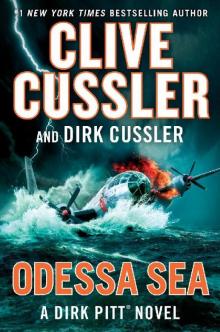 Odessa Sea
Odessa Sea Flood Tide
Flood Tide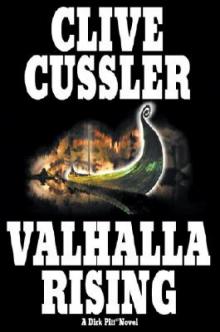 Valhalla Rising
Valhalla Rising Thriller 2
Thriller 2 The Tombs
The Tombs Lost Empire
Lost Empire The Gray Ghost
The Gray Ghost The Eye of Heaven
The Eye of Heaven Polar Shift
Polar Shift The Kingdom
The Kingdom Trojan Odyssey
Trojan Odyssey Shadow Tyrants
Shadow Tyrants Nighthawk
Nighthawk Blue Gold
Blue Gold Serpent
Serpent Lost City
Lost City The Gangster
The Gangster White Death
White Death Inca Gold
Inca Gold The Mayan Secrets
The Mayan Secrets The Pharaoh's Secret
The Pharaoh's Secret The Emperor's Revenge
The Emperor's Revenge Corsair
Corsair Sacred Stone
Sacred Stone The Silent Sea
The Silent Sea The Rising Sea
The Rising Sea Black Wind
Black Wind Fast Ice
Fast Ice Ghost Ship
Ghost Ship Marauder
Marauder The Thief
The Thief Medusa
Medusa Typhoon Fury
Typhoon Fury Journey of the Pharaohs
Journey of the Pharaohs The Navigator
The Navigator The Saboteurs
The Saboteurs Crescent Dawn
Crescent Dawn Skeleton Coast
Skeleton Coast Wrath of Poseidon
Wrath of Poseidon The Mediterranean Caper
The Mediterranean Caper The Romanov Ransom
The Romanov Ransom Treasure
Treasure The Race
The Race The Bootlegger
The Bootlegger Spartan Gold
Spartan Gold Havana Storm
Havana Storm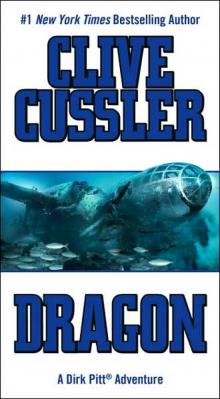 Dragon
Dragon Piranha
Piranha Poseidon's Arrow
Poseidon's Arrow The Cutthroat
The Cutthroat Atlantis Found
Atlantis Found The Jungle
The Jungle The Oracle
The Oracle Treasure / Dragon / Sahara: Clive Cussler Gift Set
Treasure / Dragon / Sahara: Clive Cussler Gift Set Clive Cussler and Dirk Pitt Revealed
Clive Cussler and Dirk Pitt Revealed The Sea Hunters
The Sea Hunters Pirate
Pirate The Striker
The Striker Plague Ship
Plague Ship The Wrecker
The Wrecker Iceberg
Iceberg The Chase
The Chase The Spy
The Spy Golden Buddha
Golden Buddha The Titanic Secret
The Titanic Secret Zero Hour
Zero Hour Fire Ice
Fire Ice Dark Watch
Dark Watch The Storm
The Storm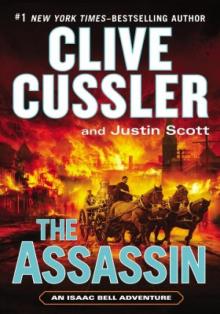 The Assassin
The Assassin Vixen 03
Vixen 03 Arctic Drift
Arctic Drift Night Probe!
Night Probe! Cyclops
Cyclops Medusa nf-8
Medusa nf-8 Shock Wave dp-13
Shock Wave dp-13 Marauder (The Oregon Files)
Marauder (The Oregon Files) Lost Empire fa-2
Lost Empire fa-2 Arctic Drift dp-20
Arctic Drift dp-20 Dirk Pitt 22 - Poseidon's Arrow
Dirk Pitt 22 - Poseidon's Arrow Treasure of Khan dp-19
Treasure of Khan dp-19 Dark Watch of-3
Dark Watch of-3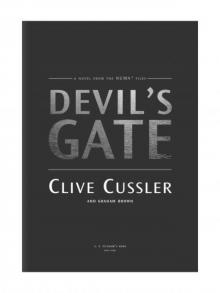 Devil's Gate
Devil's Gate The Sea Hunters II: More True Adventures with Famous Shipwrecks
The Sea Hunters II: More True Adventures with Famous Shipwrecks Flood Tide dp-14
Flood Tide dp-14 The Mediterranean Caper dp-2
The Mediterranean Caper dp-2 Iceberg dp-3
Iceberg dp-3 Sahara dpa-11
Sahara dpa-11 Pacific Vortex! dp-1
Pacific Vortex! dp-1 Deep Six dp-7
Deep Six dp-7 Dragon dp-10
Dragon dp-10 Serpent nf-1
Serpent nf-1 Havana Storm (Dirk Pitt Adventure)
Havana Storm (Dirk Pitt Adventure)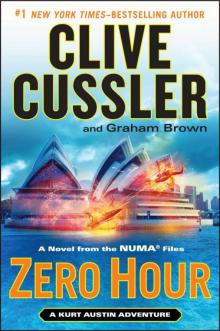 Zero Hour nf-11
Zero Hour nf-11 The Storm nf-10
The Storm nf-10 The Thief ib-5
The Thief ib-5 Lost City nf-5
Lost City nf-5 The Mayan Secrets fa-5
The Mayan Secrets fa-5 White Death nf-4
White Death nf-4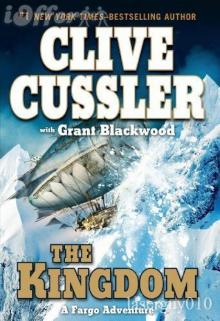 The Kingdom fa-3
The Kingdom fa-3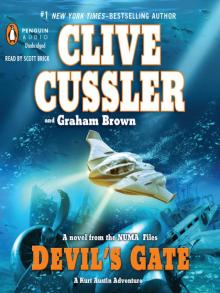 Devil's Gate nf-9
Devil's Gate nf-9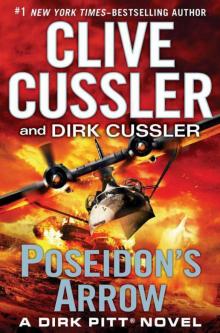 Poseidon's Arrow dp-22
Poseidon's Arrow dp-22 Raise the Titanic dp-4
Raise the Titanic dp-4 Shadow Tyrants--Clive Cussler
Shadow Tyrants--Clive Cussler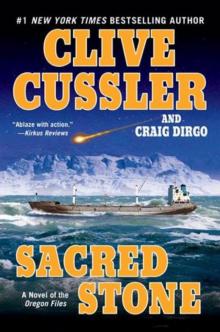 Sacred Stone of-2
Sacred Stone of-2 Skeleton Coast tof-4
Skeleton Coast tof-4 Mirage tof-9
Mirage tof-9 The Jungle of-8
The Jungle of-8 The Emperor's Revenge (The Oregon Files)
The Emperor's Revenge (The Oregon Files) Golden Buddha of-1
Golden Buddha of-1 Blue & Gold
Blue & Gold The Tombs fa-4
The Tombs fa-4 Inca Gold dp-12
Inca Gold dp-12 Treasure dp-9
Treasure dp-9 Atlantis Found dp-15
Atlantis Found dp-15 Black Wind dp-18
Black Wind dp-18 the Silent Sea (2010) tof-7
the Silent Sea (2010) tof-7 The Wrecker ib-2
The Wrecker ib-2 Fire Ice nf-3
Fire Ice nf-3 The Chase ib-1
The Chase ib-1 Sahara
Sahara The Striker ib-6
The Striker ib-6 Polar Shift nf-6
Polar Shift nf-6 The Race ib-4
The Race ib-4 Corsair of-6
Corsair of-6 Cyclops dp-8
Cyclops dp-8 The Navigator nf-7
The Navigator nf-7 Plague Ship tof-5
Plague Ship tof-5 Sea of Greed
Sea of Greed Vixen 03 dp-5
Vixen 03 dp-5 Thriller 2: Stories You Just Can't Put Down
Thriller 2: Stories You Just Can't Put Down